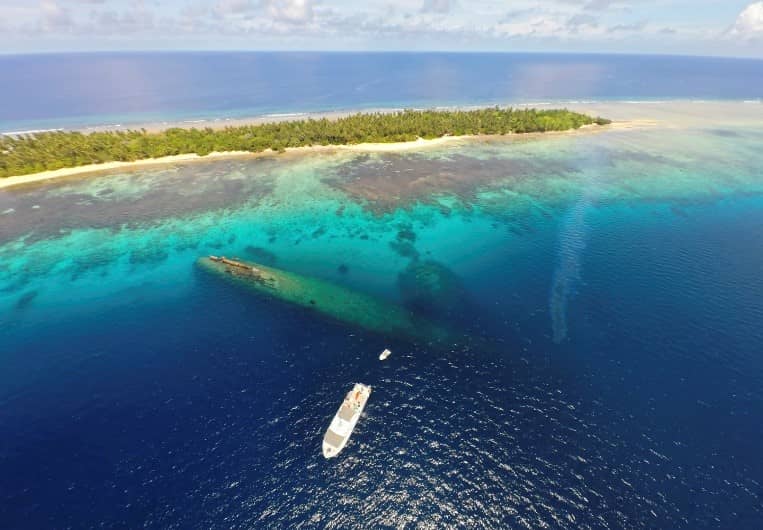The US Military is trying to recover the oil from a ship which has been underwater for the last 72 years. The warship is a German heavy cruiser Prinz Eugen which was captured by the US as a war prize after the end of World War II. The Prinz Eugen turned over after being nuked during the atomic bomb tests at Bikini Atoll. For many years, experts feared that the radioactive ship’s oil might leak into the Pacific. Now the Pentagon is working to do something about this situation before it gets too late to do anything.
In July 1946, many months after the end of World War II, the US Navy prepared one of the mightiest fleets in the history which was led by the aircraft carrier Saratoga and battleship New York. The fleet also included the captured Axis vessels such as the Japanese battleship Nagato and the Prinz Eugen. A fleet of more than 80 warships was anchored at Bikini Atoll in the Marshall Islands; the fleet was nuked by the US Navy twice. The World War II was gone, but the US-Soviet relations were not truly warm. Many believed that Moscow would also get a bomb. The US Navy was curious to know what will happen to warships if attacked with nuclear bombs. To check that, they built this fleet. The operation was called Operation Crossroads, and it involved two tests; Test Able and Test Baker. Each simulated an atomic attack on the fleet.
The German heavy cruiser Prinz Eugen was one of the German Navy’s largest ships. It was fast and powerful, Prinz Eugen teamed up with the battleship Bismarck during wartime to sink the British battlecruiser Hood before it was stuck in Germany for repairs. The ship was given to the US Navy at the end of the war. It survived both the atomic attack and only broke the main mast. Even though the warship survived the blasts, she became radioactive. After the initial attempts to decontaminate the ship, the US towed it to Kwajalein Atoll, where she sank after six months. Now the warship is visible near the coast of Enubuj island, upside down in the shallow water. The ship’s propellers are still resting above the surface of the Pacific Ocean.
In 1974, the US Military warned that the oil is still aboard the German warship and was at risk of escaping and it should be removed within 30 years. US Fish and Wildlife Service presented a report which said that a significant concern is a typhoon damaging the wreck and facilitating a significant leak. The oil retrieval process is a joint project of the US Army, US Navy, and the Republic of Micronesia. The US salvage ship USNS Salvor and oil tanker Humber are taken directly above the Prinz Eugen. The military estimates that there is nearly 250,000 and 700,000 tons of oil still on the ship. According to the US FWS report, they plan to use ‘hot tap’ technology which was developed by the Norwegian company Miko Marine.
The Moskito hot trap system uses electromagnetic clamps to attach itself to a chip haul, cut a hole, install a valve system for siphoning away the oil which will then be pumped into Humber’s holds. A similar operation was carried out in 2003 to remove the oil from the sunken US Navy oil tanker USS Mississinewa, which was sunk by a Japanese manned torpedo during the WWII. The way in which the Prinz Eugen has settled upside down in the very shallow water will make it easier to draw the oil as compared to other wrecks. Since the fuels were stored in tanks which are adjacent to the hull walls, accessibility to oil is not an issue either. There are 143 external tanks along with the hull wall and another 30 tanks which are deep inside the ship. The operation is expected to complete by the end of October 2018.

